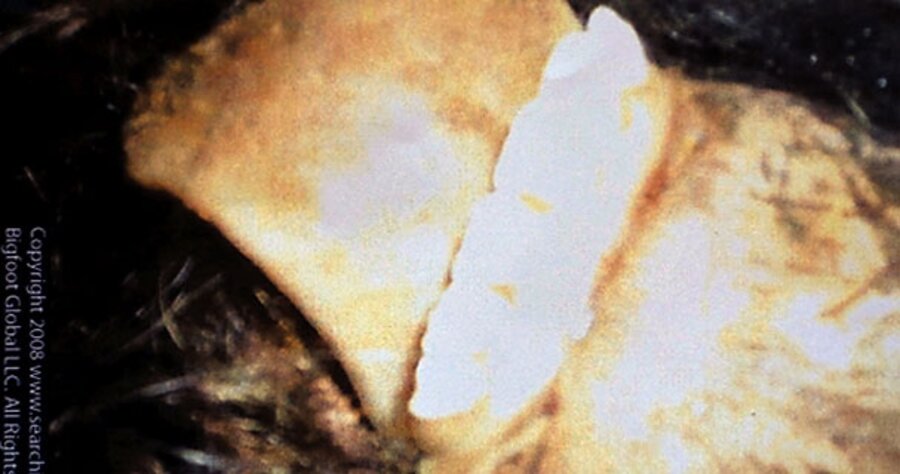What does Bigfoot mean to us?
Loading...
Back in 1997, when I was on something of a hiatus from college, I found myself in a remote Nepalese village staring at what I was pretty sure was the scalp of a yeti.
Maybe it was just cognitive dissonance: getting there required a grueling, nine-day trek through the Himalayas, followed by a three-hour search through the village to find the old Sherpa woman with the key to the Buddhist monastery where the scalp was kept. Or maybe it was the reverence with which she opened the pistachio-green filing cabinet in the prayer room and solemnly held up the glass case containing the "scalp" for me to examine. Maybe it was something about the scalp itself – a rotted, shabby thing that resembled a large, misshapen coconut half – that exuded a kind of venerability. Or maybe it was just because the air is really thin up there. Whatever it was, for a brief moment, I believed that I was looking at the real thing.
So you can imagine my disappointment later that day when I learned that in 1960 the scalp had been analyzed by American scientists, who concluded that it had been molded from the hide of a goat.
Bigfoot enthusiasts endured a similar letdown last week, when a trio of outdoorsmen claimed to have found a sasquatch carcass in the state of Georgia's wilderness, only to have DNA tests reveal that the samples they'd provided came from an oppossum. To all those who found this news to be a huge bummer, believe me, I can relate.
After all, how cool would it be if Bigfoot were real? It would mean that, despite all the abuse that mankind has unleashed on the planet, there still remain some places that are truly wild.
And in a sense, there are. Earlier this month, scientists came across what they called a "mother lode" of 125,000 previously uncounted western lowland gorillas in the Republic of the Congo. And in recent years, scientists have discovered at least three new species of deer in Vietnam, and what may be a new carnivore species in the dense forests of Borneo. And our ocean voyages continually turn up ever-larger species of huge deep-sea dwellers, such as the colossal squid, one of the world's largest animals.
But in another sense, it's doubtful that there exists any place on Earth that has not been in some way touched by human activity. The effluent of industrial civilization travels far and wide. The pesticide DDT, banned decades ago in most countries, is showing up in Antarctic penguins. Millions of tons of discarded plastic wind up in the middle of the Pacific Ocean. And the burning of fossil fuels is changing the climate – and countless ecosystems – in ways that we are only beginning to understand.
Humans' impact has become so extensive that, in February, the Geological Society of London, the world's oldest association of earth scientists, agreed that we are now living in a new geological epoch. In the Anthropocene Epoch, which dawned with the Industrial Revolution, humans are seen as the driving force shaping the planet's environment.
So maybe the yeti and Bigfoot represent for us a connection to the previous epoch. Americans and Himalayan people are not the only ones to have imagined an elusive, reddish-brown man-ape that lives in the wild. In China they call it the yeren; in Australia, it's the yowie; in Malaysia, it's the sejarang gigi; and in Brazil, they call it the mapinguari.
The prevalence of these legends suggests something primitive. Perhaps they reflect an ancient memory of a time when our ancestors coexisted with their hairy hominid relatives.
A similar figure even appears in the Bible. In Genesis, Esau is described as coming out of the womb covered in red hair, with his brother, Jacob, grasping at his heel. Unlike his gentle, studious brother, Esau is a hunter who prefers the outdoors. One day, Esau, returning from a hunt faint with hunger, agrees to exchange his birthright with his twin for some food. At that point Esau, and all his descendants, became forever separate from the chosen people.
Perhaps our desire to find the Bigfoots of the world represents an ancient longing for the wild twin who helped bring us into the world, whom we then abandoned along the way to creating a civilization.
As for me, I'm now firmly in the skeptics' camp. But I hope that others will keep up the hunt. After all, there aren't too many wild places left, and it would be a shame if the poor beast – on the off chance that he exists – were to become extinct before we could thank him.





